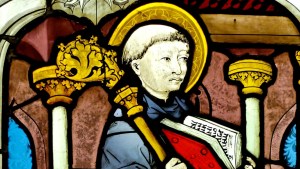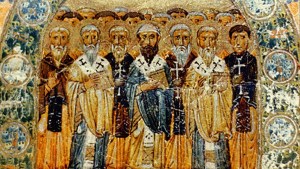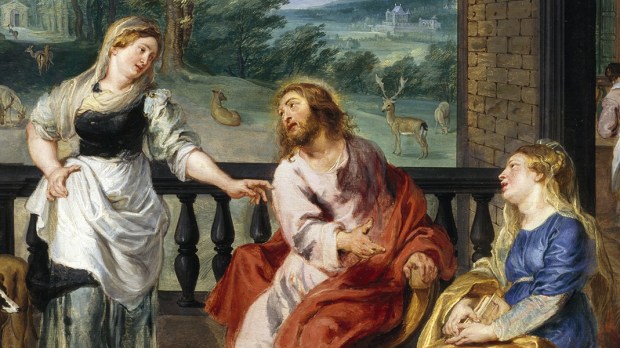When it comes to aids and guides to reading Scripture, there are a host of resources available for Catholics. There are any number of commentaries or devotionals that can help us to understand God’s Word better. But as Catholics, we are always invited to read Scripture from within the mind of the Church. There are few better ways to do this than to see what the Church Fathers thought about a particular passage.
A great resource for consulting the Fathers comes to us from the Middle Ages. Among the numerous works of St. Thomas Aquinas, we find his compilation called the Catena Aurea, or “Golden Chain,” a commentary on each of the four Gospels made up of quotations from the Church Fathers. Even better, this resource is available for free online!
As an introduction to this work, let’s examine the section concerning this past Sunday’s Gospel reading, the famous story of Martha and Mary.
It’s a passage we all know well: Jesus comes to visit his friends, a pair of sisters. One is busying with serving their guest while the other sits at Jesus’ feet and listens. When Martha asks Jesus to tell Mary to help her, Jesus responds, “Martha, Martha, you are careful and troubled about many things: But one thing is needful: and Mary has chosen that good part, which shall not be taken away from her” (Luke 10:38-42).
What should we make of this? How did the Fathers read it?
One thing we gather quickly from reading the Golden Chain is the way in which the Fathers were able to find theological significance and symbolism in every detail of the Gospel stories. Take the Fathers’ commentary on the fact that Mary sat at Jesus’ feet.

Read more:
Just 2 min a day with the Gospels, and your life will change, says Francis
St. John Chrysostom comments
It is not said of Mary simply that she sat near Jesus, but at His feet, to show her diligence, steadfastness, and zeal, in hearing, and the great reverence which she had for our Lord.
More poetically, St. Augustine writes
Now as was her humility in sitting at His feet, so much the more did she receive from him. For the waters pour down to the lowest part of the valley, but flow away from the rising of the hill.
Another is that the Fathers could vary in their interpretations of particular passages. St. Basil the Great is critical of Martha, seemingly accusing her of trying to tempt Jesus into gluttony with the food she was so busy preparing; St. Basil states laconically, “Our Lord did not commend Martha when busied about much serving.” Yet St. Augustine writes that if we were to blame Martha for her service, then “let men give up ministering to the needy … taking no care what stranger is in the village in want of bread.”
What, then, do the Fathers say about the heart of this passage? What does it mean that “Mary has chosen the better part”?
To the Fathers, Jesus here is pointing towards our supernatural destiny. While we are called to serve each other here on earth, our ultimate fulfillment is union with God forever—the contemplation of the divine essence in eternity. Thus, Martha’s work is indeed good, but Mary’s part is closer to what we will experience in heaven—unlike servile work, contemplation of God’s word “will not be taken away” in the life to come.

Read more:
A lesson from Eden: We were made to work
Thus, as St. Gregory says, “the works of an active life pass away with the body, but the joys of the contemplative life rather begin to increase from the end.”
St. Augustine writes that here both Martha and Mary represent the Church: Martha, the present Church which “receives the Lord into her heart”; Mary, the future Church which “shall delight in Wisdom alone.”
When attempting to understand a difficult or mysterious passage of the Gospels, it can often help to turn to the Fathers and see how they read it. And the Catena Aurea is a great resource that brings together the thought of the Fathers in one convenient place. Check it out!

Read more:
Was this saint the last of the Church Fathers?

Read more:
Who are the “Fathers of the Church” and why do they matter?

